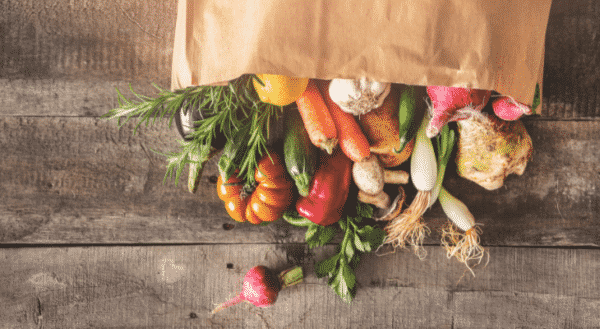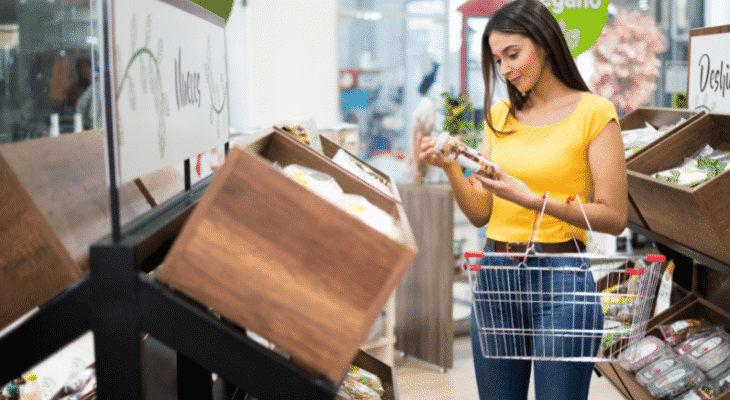Natural and Organic Trends for 2022: What you Need to Know
After the general uncertainty of the past two years, the natural and organic retail sector has good reason to feel optimistic.
After the first wave of the pandemic faded in 2020 and panic buying subsided, delivery service Doorstep Organics found that its customer base had grown by a solid 20 per cent.
At the time, Managing Director Peter Richardson attributed the increase to the closure of our borders. With travel off the cards, Australians had money to spare. “Their wealth allowed them to be more focused on health,” he says.
But 2021 has caused him to reconsider. Doorstep’s customer total bounced around due to lockdowns but, as the year rolled out and international travel resumed in some parts of the country, it is a stable 40 per cent higher than it was at the start of 2020.

The pandemic seems to have delivered permanent benefits for many natural and organic businesses, says Martine Cooper, HealthyLife’s General Manager of Merchandise & Partnerships. “Products that were considered health-shop-only purchases two years ago have very quickly become mainstream supermarket offers,” she says.
The resurrection of HealthyLife by Woolworths this year is likely a direct response to this increased mainstream interest.
What’s more, while new customers pour into the sector, existing ones are doubling down. According to this year’s Australian Organic Market Report, 37 per cent of existing organic shoppers increased the organic allocation in their household spend in 2020.
What’s driving growth in natural and organic?
Cooper believes Australian consumers underwent a fundamental shift in attitude over the past two years. She reckons increased disposable income is just one contributing factor. “They’ve also had more time and motivation to research what they’re buying,” she notes.
Since the beginning of 2020, Australians have been optimising their home lives and health has been a priority. It’s perhaps not surprising that consumers are now taking natural and organic products more seriously.
In addition, Cooper and Richardson both say consumers are paying more attention to country of origin – not just because of temporary pandemic-related contamination fears but because of the growing concern about carbon footprints. This has given natural and organic grocers, which generally source fruit and vegetables locally, an edge over import-reliant supermarkets.
Of course, many natural and organic businesses rely on imports, too. But they tend to provide customers with more information about the supply chain as part of their overall service offering, displaying information in-store or online.
“Customers want to know more about the supply chain than ever before,” says Cooper. “Australian-made and -grown has become more important, but so has general knowledge about where products are coming from and how they’re being produced.”
What’s in store for 2022?
The consumer concerns that helped grow natural and organic this year and last haven’t gone away. Both Richardson and Cooper say these concerns are fueling the latest trends.
“For example, vegan is now the biggest-selling group of products in our larder,” says Richardson. “And that seems to be because of the worry about climate change, plus a general desire to be healthy.”

Meat substitutes and pre-prepared vegan meals are both selling very well, he says. Meanwhile, existing vegan and vegan-inclined customers are becoming more adventurous. “Anything fermented is in demand,” says Richardson. “Last year it was sauerkraut. Now, it’s cheese. Nut cheeses… they’re huge.”
Cooper confirms the fermented trend, suggesting that growing public awareness about gut health is playing a part. During the pandemic, consumers even began fermenting food themselves. “Make-your-own-kombucha kits and make-your-own sourdough have done extremely well, and that hasn’t subsided at all yet,” she says.
Finally, both Richardson and Cooper say that non-food categories, including personal care and healthy home, are experiencing massive ongoing growth. “Natural cleaners and compostable packaging are leading the way,” says Cooper.
Although he is pragmatic about the future, Richardson believes 2022 will be another growth year for Doorstep Organics. “Times are changing, and people aren’t going backwards,” he says.
Four 2022 trends
Richardson and Cooper suggest looking out for these popular products and ingredients in order to stand out from the crowd;
- Gut health and immunity products: Bone broths, apple cider vinegar
- Alternative grains and flours: Hemp, buckwheat, chickpea, chia
- Plants extracts and herbs: Native herbs, hibiscus
- Functional beverages: Tonics, healthy sodas and natural energy drinks
To discover more natural, organic and healthy products and brands, browse the Naturally Good Product Directory.
-
Get your FREE ticket
- REGISTER FOR FREE
